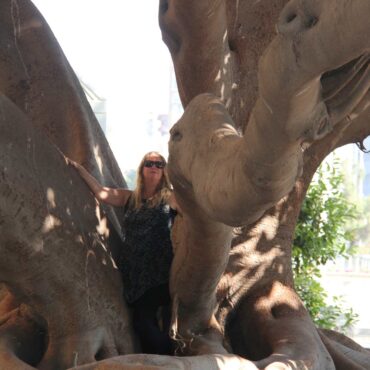Abstract
In an era of high-tech and climate extremes, we are drowning in information while starving for wisdom. Enter Lo—TEK, a design movement building on indigenous philosophy and vernacular infrastructure to generate sustainable, resilient, nature-based technology. Designers responding to the challenges ahead, could be imagining radical nature-based urban typologies that can sustain growth, where indigenous innovation is hybridized with contemporary materials and construction techniques. From the scale of the module, to the structure, to the infrastructure, and ecosystem, indigenous wisdom and ecological symbiosis can be reimagined to reduce density, rebuild diversity and shrink both the individual and urban footprint. Spanning 18 countries from Peru to the Philippines, Tanzania to Iran, Lo—TEK explores millennia-old human ingenuity on how to live in symbiosis with nature.
From the Greek mythos, meaning story-of-the-people, mythology has guided mankind for millennia. Three hundred years ago, intellectuals of the European Enlightenment constructed a mythology of technology. Influenced by a confluence of humanism, colonialism, and racism, the mythology ignored local wisdom and indigenous innovation, deeming it primitive. Guiding this was a perception of technology that feasted on the felling of forests and extraction of resources. The mythology that powered the Age of Industrialization distanced itself from natural systems, favoring fuel by fire.
Coming to terms with an uncertain future and confronted by climate events that cannot be predicted and ecosystem failures that cannot be stopped, humanity is tasked with developing solutions to protect the wilderness that remains, and transform the civilizations we construct.
Today, the legacy of this mythology haunts us. Progress at the expense of the planet birthed the epoch of the Anthropocene — our current geological period characterized by the undeniable impact of humans upon the environment at the scale of the Earth. Charles Darwin, scholar and naturalist who is seen as the father of evolutionary theory, said “extinction happens slowly,” yet sixty percent of the world’s biodiversity has vanished in the past forty years.1 Coming to terms with an uncertain future and confronted by climate events that cannot be predicted, species extinctions that cannot be arrested, and ecosystem failures that cannot be stopped, humanity is tasked with developing solutions to protect the wilderness that remains, and transform the civilizations we construct. While we are drowning in this Age of Information, we are starving for wisdom. Only a sliver of the technologies that existed at the time of the Enlightenment were valued and shepherded through to the present. Meanwhile, an alternative mythology of technology has been with us since well before the Enlightenment. It is unacknowledged, existing at the far ends of the Earth, with its contributors deemed primitive for centuries. While “modern” societies were trying to conquer nature in the name of progress, these indigenous cultures were working with it.
Indigenous technologies are not lost or forgotten, only hidden by the shadow of progress in the remotest places on earth.
Indigenous technologies are not lost or forgotten, only hidden by the shadow of progress in the remotest places on earth. While society values and preserves the architectural artifacts of dead cultures, like the four- thousand-year-old Pyramids of Giza, those of the living are displaced, like the six-thousand-year-old floating island technology of the Ma’dan in the southern wetlands of Iraq. Extending the grounds of typical design, Lo—TEK is a movement that investigates lesser-known local technologies, traditional ecological knowledge (TEK), indigenous cultural practices, and mythologies passed down as songs or stories. In contrast to the homogeneity of the modern world, indigeneity is reframed as an evolutionary extension of life in symbiosis with nature.
Radical indigenism argues for a rebuilding of knowledge and explores indigenous philosophies capable of generating new dialogues.

Fish Dam, illustration. Courtesy of Julia Watson.
Coined by Princeton Professor and citizen of the Cherokee Nation Eva Marie Garoutte, radical indigenism argues for a rebuilding of knowledge and explores indigenous philosophies capable of generating new dialogues.2 The concept of radical indigenism takes its name from the Latin derivation of the word “radical”: radix, meaning “root”. Design by radical indigenism imagines a movement that rebuilds an understanding of indigenous philosophies in relation to design to generate sustainable and climate resilient infrastructures. Lo—TEK orients us towards a different mythology of technology. One that evolves humanism with radical indigenism.
The field of design is at a pivotal moment, expanding to confront complex problems that require robust and adaptive responses. With environmental and societal collapse imminent in the coming decades, design at the intersection of anthropology, ecology and innovation is the most pressing discussion of our time.3 A new mythology that acknowledges Lo–TEK is critical to advancing the coexistence of man with nature.
While scientific knowledge is considered an essential truth, it is in actuality a constantly evolving mythology.
1/2
Basic Module of Sawah Tambak, illustration. Courtesy of Julia Watson.
While scientific knowledge is considered an essential truth, it is in actuality a constantly evolving mythology. In contrast, our society overlooks indigenous spiritual beliefs as myth, despite them encapsulating millennia-old, enduring ecological knowledge. The invalidation of science that integrates culture and spirituality is exemplified in the controversy surrounding the simultaneous discovery of the theory of natural selection by Alfred Russel Wallace and Darwin, the guiding principle for ecological thought since the Enlightenment. Wallace’s relative obscurity can be attributed to both Darwin’s exploitation of their collaborative work and Wallace’s ties to spiritualism. Wallace was eventually ostracized and invalidated by his peers for attributing spiritual meaning into scientific phenomenon.
With beliefs and mythology forming a large dimension of Lo–TEK, the struggle between science and spiritualism overshadows indigenous people, who remain the unrecognized ecological innovators of the planet. Compounding this problem, history also reveals a legacy of indigenous appropriation without attribution. The very origin of the term sustainability can be traced back to The Great Lore of the Iroquois people, and its Seventh Generation Principle, considering actions as they affect the seventh generation after them.4 This association remains unacknowledged, perhaps for fear of invalidating its scientific authenticity with spiritual beliefs, just as the relationship of indigenous people to sustainable technology remains unexplored.
Indigenous mythologies recount knowledge about the complex interactions within ecosystems in which humans are embedded. Today, spirituality has been adopted as a foundation of the eco-industry. Popular culture promotes green washing, a superficial rather than systemic approach to the environment.
In the indigenous world, spirituality in the landscape is directly related to sustainability and resource management through belief systems, and customs in which we “remember to remember.” Indigenous mythologies recount knowledge about the complex interactions within ecosystems in which humans are embedded. Today, spirituality has been adopted as a foundation of the eco-industry. Popular culture promotes green washing, a superficial rather than systemic approach to the environment. In contrast to the dismissal Wallace faced, the coexistence of the spiritual and scientific is welcomed in our eco-friendly time. Individuals are conscious and concerned about the environment and their place in it. While the action of individuals is important, it is action at the scale of infrastructures, designed with a mythology connecting individuals to ecosystems, that can catalyze a global shift.
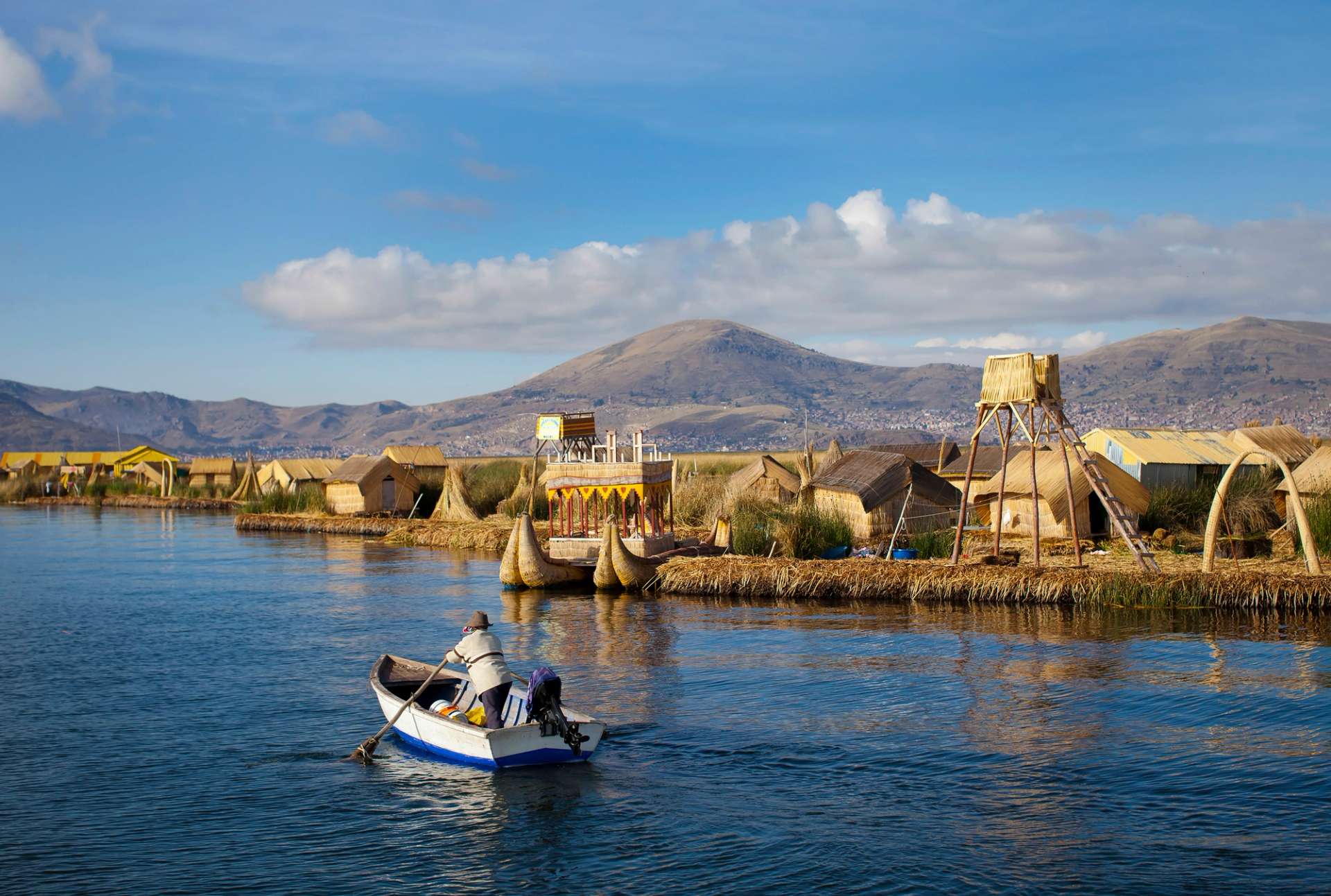
Fig. 4
In this era of the Anthropocene, humankind will need to redefine the mythology of technology to include indigenous innovation.
In this era of the Anthropocene, humankind will need to redefine the mythology of technology to include indigenous innovation. The indigenous cultures of the world need to be recognized as innovative rather than primitive and have their knowledge embedded in the thinking of our future. Harvard professor Dr. Edward O. Wilson predicts that during this next hundred years the protection of biodiversity will be our highest priority.5 However, species’ extinction alone won’t be the twenty-first century’s greatest loss. The same forces that drive species extinction endanger the indigenous technologies that may hold a key to humanity’s survival. With indigenous communities being one of the groups most impacted by climate change, and many of the activities that, in the name of progress, have precipitated it, their knowledge is in fact an essential part of the solution.
In the age of the Anthropocene, humanity’s impact on the planet is undeniable. By destruction and even by conservation, all ecological systems are impacted by human action. We are now at a crossroads where we can either continue a narrow view of technology, informed by our distance from nature, or we can acknowledge that this is just one way and not the only way for humans to live. Designers today understand the urgency of reducing humanity’s negative environmental impact, yet perpetuate the same mythology that relies on exploiting nature. We cast Nature both as a menacing force now retaliating against us, and as a forlorn figure, surrendering to our ‘saving by way of savvy’ technological innovation.
Designers today understand the urgency of reducing humanity’s negative environmental impact, yet perpetuate the same mythology that relies on exploiting nature. We cast Nature both as a menacing force now retaliating against us, and as a forlorn figure, surrendering to our ‘saving by way of savvy’ technological innovation.
1/2
Kyapo Apete Village 4 Stages, illustration. Courtesy of Julia Watson.
By building hard infrastructures and favoring hightech homogenous design, we are ignoring millennia-old knowledge of how to live with Nature in symbiosis. Being borne in an era before climate change, the early efforts of the conservation movement to “save nature” predictably perpetuated the same mythology of technology, overlooking indigenous people and their innovations. Conservation lands were conceived of as guarded wilderness, from which human life was removed. Charismatic landscapes and species were protected, rather than the symbiotic relationships between species that support ecosystems. By attempting to preserve nature, the top-down approach to conservation has often eroded it. This movement removed stewards, erased knowledge, and ignored resilient technologies that had been mitigating climate challenges for thousands of years.
The American forefathers of conservation could not have imagined the movement would be adopted globally, displacing millions of indigenous peoples and accelerating the mass extinction of species. In the shadows of the conservation movement is the hidden story of conservation refugees. Millions of indigenous peoples who have been systematically removed from their lands to create conservation areas.6 Accompanying this mass displacement is the loss of Lo—TEK innovations that rely on and protect animals, materials, mythologies, and man.
While the conservation movement was conceived with admirable ambitions, it was based on the scientific thinking of the time that elevated nature as pristine wilderness that had to be saved, while indigenous peoples and their technologies were completely ignored. By valuing science over tradition, the individual over community, and pristine wilderness over indigenous peoples, the prevailing mythology of technology was reinforced.

Fig. 5
Exploring alternatives to the dominant mythology and the failure of conservation reveals the existence of the invaluable indigenous knowledge facing extinction. We need to change how we view the Anthropocene.
We cannot find solutions to the problems we face with the same ideology from which those problems emerged. Exploring alternatives to the dominant mythology and the failure of conservation reveals the existence of the invaluable indigenous knowledge facing extinction. We need to change how we view the Anthropocene. While human impact is ubiquitous, it does not mean all interactions have led to destruction. This mindset distances both us from nature and nature from us. In contrast, the mindset of indigeneity sees humans as part of nature and has evolved technologies that use biodiversity as a building block. A new mythology of technology in the era of the Anthropocene can replace the pending threat that nature will destroy us with the optimism that a collaboration with Nature can save us.
Climate change has shown us that our survival is not dependent upon superiority, but upon symbiosis. In the shift towards designing resilient cities, indigenous technologies are critical in the conversation for designers addressing climate change, as they are living examples that embody resilience thinking. We need to expand our definition of sustainable technology. Acknowledging the mistakes of modernity and the failure of conservation, we can shift our position of authority to one of collaboration with Nature. This will involve incorporating the nuances of indigenous innovation.
1/3
Large Khasi, illustration. Courtesy of Julia Watson.
Building high-tech, homogenous, hard infrastructures in response to climate change is perpetuating the old mythology of technology. Considering drastic sea level rise, recurrent storm events, and other unpredictable impacts from climate change, static infrastructures are proven limited in response to dynamic change. Without implementing soft systems that use biodiversity as a building block, these infrastructures remain inherently unsustainable. In an era of both utopian high tech and unprecedented climate extremes, we are drowning in information, while starving for wisdom.
We must begin telling an emergent yet ancient mythology of technology, where progress is not only found in our fascination with the future. As designers, our role is to create a new ground for a positive engagement with Nature. Re-establishing this relationship means acknowledging that humans have always lived with natural systems. Indigenous people of the Great Lakes are guided by the Original Instructions.7 These are the mythologies that have been passed down through generations in ceremony that contain the wisdom of the past. They are not instructions but, like a compass, they provide an orientation rather than a map for the future.8 Innovation can be found in knowledge from the past, and the customs that teach us to “remember to remember.”
As designers we need to remember we are a part of nature. Our global survival is dependent upon our thinking shifting from “survival of the fittest” to “survival of the most symbiotic” as a critical first step.
As designers we need to remember we are a part of nature. Our global survival is dependent upon our thinking shifting from “survival of the fittest” to “survival of the most symbiotic” as a critical first step.9 Indigenous communities, who adopted this thinking thousands of years ago, now hold a global bank of eco-intelligence and indigenous innovation that is unequivocally invaluable, but only if we invest in it. In the foreseeable future, the extinction of these technologies will stand alongside the extinction of species as one of the great losses of the 21st century.
Excerpted and adapted from Julia Watson, Lo-TEK. Design by Radical Indigenism (Taschen, 2019).
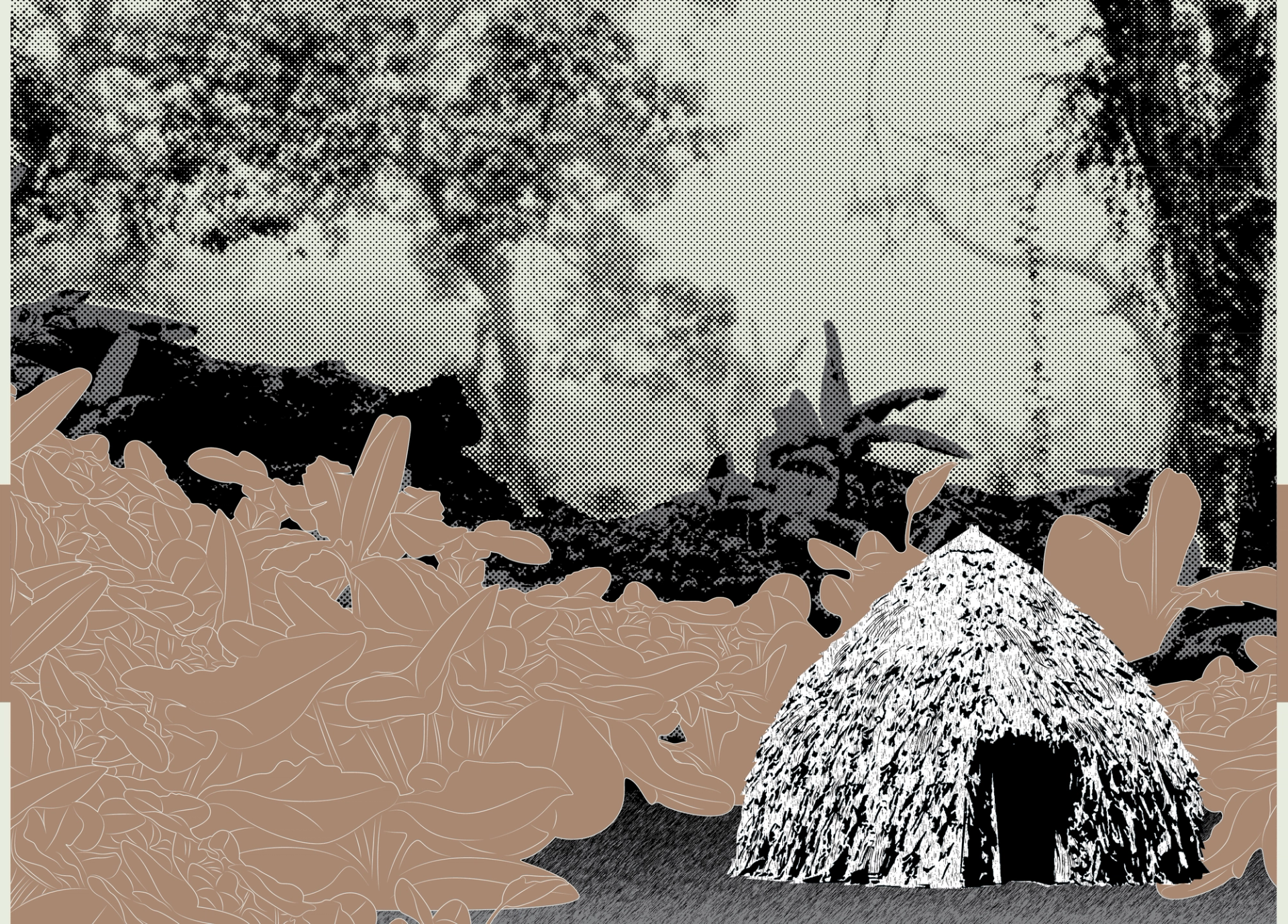
Kihamba Forest Gardens, illustration. Courtesy of Julia Watson.
Notes
1 Charles Darwin, On the Origin of Species by Means of Natural Selection, or, the Preservation of Favoured Races in the Struggle for Life. (London: J. Murray; WWF, 2014)
2 Fikret Berkes, Sacred Ecology: Traditional Ecological Knowledge and Resource Management (Philadelphia PA: Taylor & Francis, 1999).
3 Damian Carrington and Paul Ehrlich, “Collapse of Civilisation is a Near Certainty Within Decades”, The Guardian (MArch 2018). Available at: shorturl.at/akzPY
4 Gro Harlem Brundtland, Report of the World Commission on Environment and Development: Our Common Future. United Nations, 1987.
5 Edward O Wilson, “The Bottleneck”, Scientific American (February 2002): 83-91. Available at: https://www.scientificamerican.com/article/the-bottleneck/
6 Mark Dowie, Conservation Refugees: The Hundred Year Conflict Between Global Conservation And Native People (Boston: MIT Press, 2011).
7 Melissa Nelson, Original Instructions for a Sustainable Future (Rochester, Vt.: Bear & Company, 2008).
8 Robin Wall Kimmerer, Braiding Sweetgrass (Minneapolis, MN: Milkweed Editions, 2013).
9 Lynn Margulis, Symbiotic Planet: A New Look At Evolution (New York: Basic Books, 1998).
List of images
Fig. 1 A view over the sacerd Mahagiri rice terraces, a small portion of the one thousand year old agrarian system known as the subak, which is unique to the island of Bali, Indonesia. ©David Lazar
Fig. 2 A line of evenly spaced spoil craters snake along the surface of the desert from the high Elburz Mountains to the Plains of Iraq and is the only evidence of an invisible, subterranean man-made water stream called a qanat, first constructed by the Persians during the early years of the first millennium BCE. ©Alireza Teimoury
Fig. 3 In the Southern Wetlands of Iraq, an entire Ma’dan house known as a mudhif, which is built entirely of qasab reed without using mortar or nails, can be taken down and re-erected in a day. ©Jassim Alasadi
Fig. 4 Las Islas Flotantes is a floating island system on Lake Titicaca in Peru inhabited by the Uros, who build their entire civilization from the locally grown totora reed. ©Enrique Castro-Mendivil
Fig. 5 Qasab reed has long served as raw material for homes, handicrafts, tools, and animal fodder with the distinctive mudhif houses of the Ma’dan people appearing in Sumerian artwork from five thousand years ago. ©Esme Allen
Fig. 6 A young fisherman walks under a living root bridge at Mawlynnong village, India. In the relentless damp of Meghalaya’s jungles the Khasi people have used the trainable roots of rubber trees to grow Jingkieng Dieng Jri living root bridges over rivers for centuries. ©Amos Chapple
Bio
Designer, activist, academic and author, Julia Watson is a leading expert on indigenous nature-based technologies. Her unconventional practice led to research, writing, and design projects inspired by pilgrimages to indigenous sites, while her formal education led to teaching positions at Harvard, Columbia, RISD, and Rensselaer universities. Julia’s work has been widely published in journals such as SPOOL, Topos Journal, and the Indigenous Peoples and Climate Technologies Guidebook. In 2019 she published Lo-TEK. Julia’s studio work involves speaking, writing, landscape architecture and urban design, alongside futures consulting for Fortune 500 companies. She’s held fellowships with Summit REALITY & Pop!tech, received a Christensen Fund grant, an Arnold W. Brunner award for Architectural Research, a New York State Council of the Arts Architecture + Design award, and ws a Disruptive By Design Ambassador for WIRED.






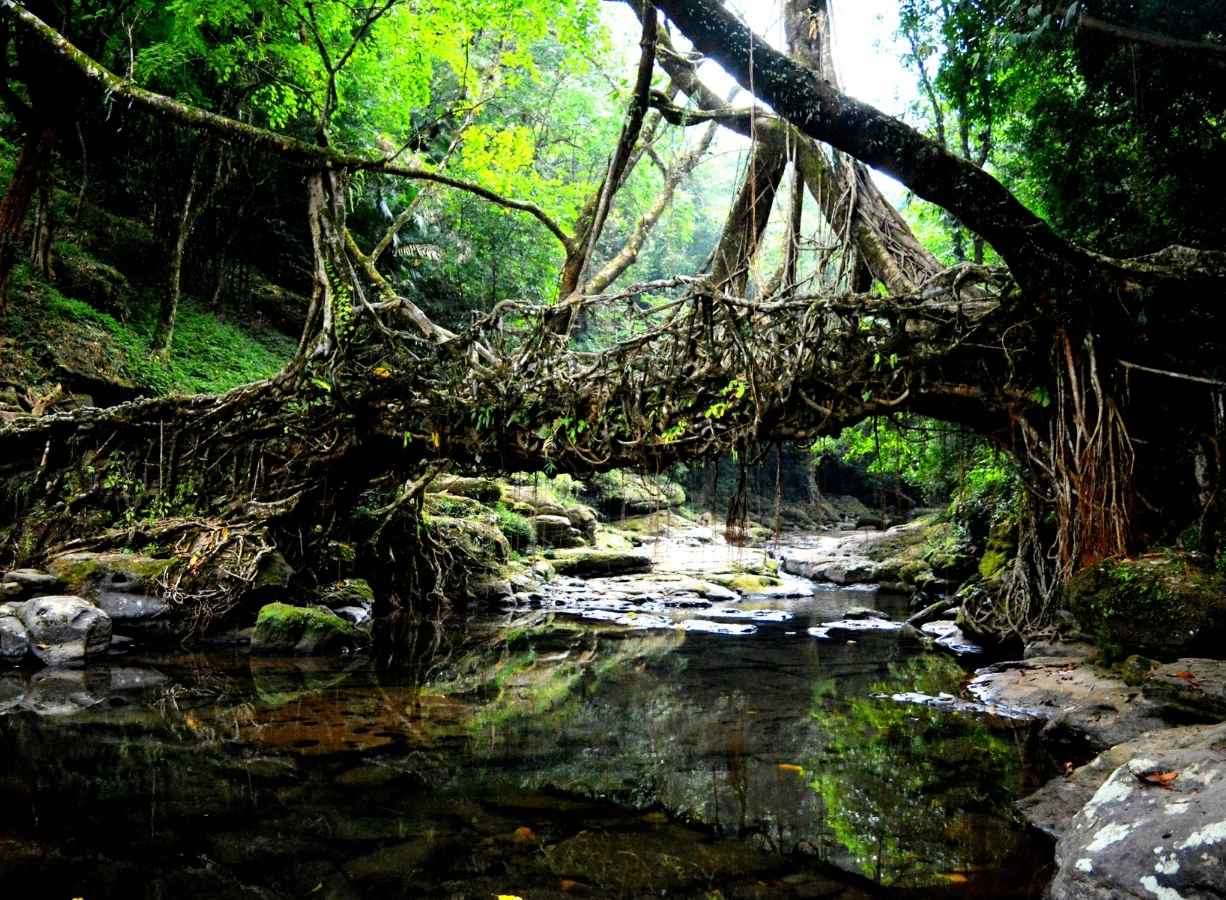






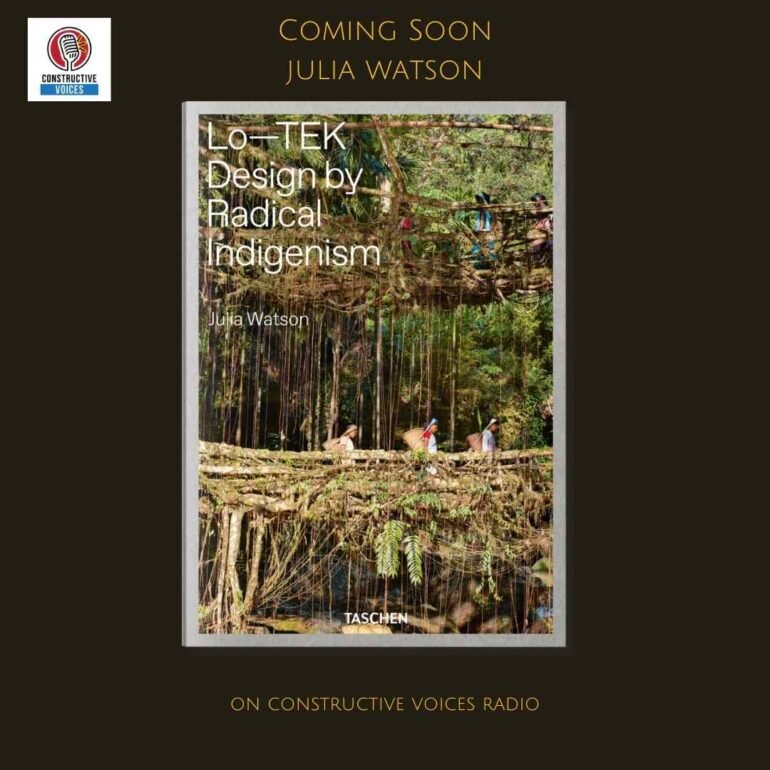 “We’re beginning to understand a great irony of climate change: that the people most affected by it often did the least to cause it. What’s less discussed is that many of those people also have the technology, philosophy, and knowledge that could have prevented the rising temperatures, the uncontrollable wildfires, and the dying coral reefs in the first place.
They’re people like the Chagga in Tanzania, whose forest-agriculture systems support Mount Kilimanjaro’s rich biodiversity and feed a rapidly-growing population. Or the Kayapó in the Amazon Basin, who use fire to cultivate their crops, replenish the soil, and protect their land from deforestation. In Iran, Persians have developed qanats, or underground aqueducts, which serve as natural foils to our energy-intensive pumps and wells. Then there’s the Khasi people of Meghalaya, India—known as the wettest place on earth—who have a solution for navigating heavy rains and monsoons: They’ve trained rubber fig trees to grow across rivers. Over the course of decades, the massive roots grow, tangle, and strengthen into the only bridges—natural or otherwise—that can withstand surging water levels and powerful storms.
These are people who were embracing regenerative agriculture, zero-waste living, and nature-based solutions long before they were 2020 buzzwords. Architect, landscape designer, and Harvard and Columbia professor Julia Watson travelled across 18 countries for six years to visit these communities and document their ways of life in her new book, Lo-TEK: Design by Radical Indigenism, published by Taschen earlier this year. Beyond shining a light on their cultures and innovations, Watson illustrates how indigenous methods actually benefit the planet—and how they might be adopted worldwide in the face of climate crisis.”
“We’re beginning to understand a great irony of climate change: that the people most affected by it often did the least to cause it. What’s less discussed is that many of those people also have the technology, philosophy, and knowledge that could have prevented the rising temperatures, the uncontrollable wildfires, and the dying coral reefs in the first place.
They’re people like the Chagga in Tanzania, whose forest-agriculture systems support Mount Kilimanjaro’s rich biodiversity and feed a rapidly-growing population. Or the Kayapó in the Amazon Basin, who use fire to cultivate their crops, replenish the soil, and protect their land from deforestation. In Iran, Persians have developed qanats, or underground aqueducts, which serve as natural foils to our energy-intensive pumps and wells. Then there’s the Khasi people of Meghalaya, India—known as the wettest place on earth—who have a solution for navigating heavy rains and monsoons: They’ve trained rubber fig trees to grow across rivers. Over the course of decades, the massive roots grow, tangle, and strengthen into the only bridges—natural or otherwise—that can withstand surging water levels and powerful storms.
These are people who were embracing regenerative agriculture, zero-waste living, and nature-based solutions long before they were 2020 buzzwords. Architect, landscape designer, and Harvard and Columbia professor Julia Watson travelled across 18 countries for six years to visit these communities and document their ways of life in her new book, Lo-TEK: Design by Radical Indigenism, published by Taschen earlier this year. Beyond shining a light on their cultures and innovations, Watson illustrates how indigenous methods actually benefit the planet—and how they might be adopted worldwide in the face of climate crisis.”
